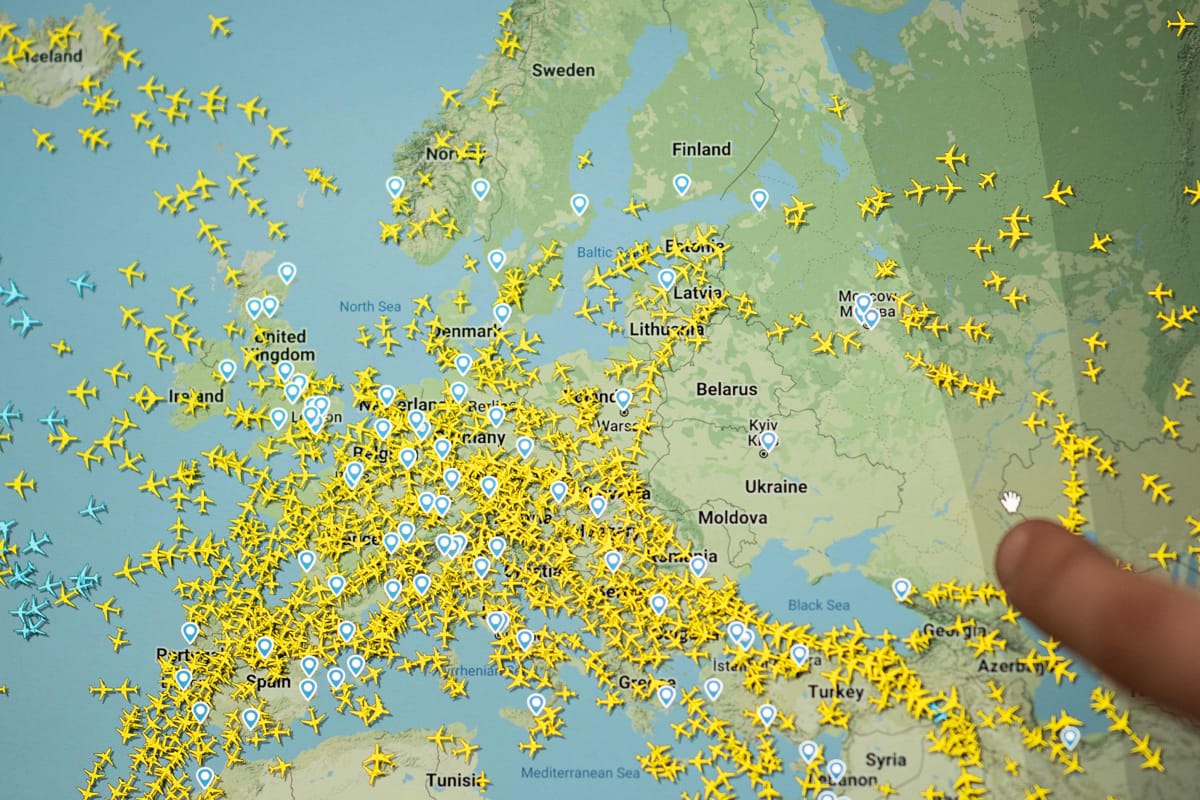Just after sundown on 6 October, Tehran issued NOTAMs for 41 Iranian airports, stating: “AD CLOSED, EXCEPT FOR EMERGENCY FLIGHT, FERRY FLIGHTS AND STATE AIRCRAFT” from 6 October 17:30 to 7 October 02:30.
For those unfamiliar with aviation speak, the notice informed airlines and airports that Iranian airspace was temporarily closed to regular civilian air traffic. But to military and intelligence experts, this signalled something far more ominous: a potential missile strike on Israel overnight, following an earlier attack this month.
While airspace may appear seamless to most travellers, it is, in fact, an exercise of national power and statecraft.
Ordinarily, NOTAMs are routine aviation safety notices. In fact, aviation authorities around the world issue thousands of NOTAMs every day, most of them concerning routine matters such as runway repairs, navigational aids being out of service, weather conditions, or even restricted or no-fly zones, such as during the recent Paris Olympics. Therefore generally, NOTAMs ensure the safety of air travel, especially civilian ones.
During conflict they serve a dual purpose. They are public notices, broadcasted to the international community in real-time and offer a glimpse into military operations that cannot be easily hidden in the fog of war. They are as much a warning as they are a piece of theatre – a signal to friends and foes alike.
However, relying on NOTAMs alone to predict military action would be speculative. States and military powers rely heavily on satellite monitoring, ground-based intelligence, and military technology to observe and respond to unfolding situations. Intelligence communities likely use notices to confirm what they suspect. Therefore, NOTAMs, though public, are but one of the many ways nations signal strategic intent.
The dangers of civilian flights over conflict zones became tragically clear in 2014 when Malaysia Airlines Flight MH17 was shot down over eastern Ukraine, killing all 298 people aboard. Cruising at 33,000 feet, the plane entered Ukrainian airspace above a war zone where Ukrainian forces and Russian-backed separatists were actively engaging. It was a stark reminder of the deadly risks that commercial aviation faces in conflict zones.

Iran is no stranger to these closures and has issued similar warnings before missile tests or military operations to comply with minimum international aviation standards. Tehran’s recent missile and drone strikes on Israel closed airspace in much of the region, though the impact of such airspace closures extends far beyond the Middle East.
For nations such as Singapore and Australia, which lie far from the conflict zone, the narrowing of safe flight routes creates significant concerns. Hundreds of commercial flights pass through Middle Eastern air corridors each day. As Iran’s airspace shuts down, pilots must reroute, often flying over less secure regions.
As a billion-dollar route that carries hundreds of thousands of passengers each year, the economic and safety implications are staggering.
Passengers on the “Kangaroo Route” – one of the world’s most important flight routes between Australia and the United Kingdom via the Middle East and Southeast Asia – could face significant disruptions. In peacetime, these flights pass through Iranian and Iraqi airspace, which offer the most geographically direct route between Europe, Southeast Asia, and Australia. But today, passengers may find themselves rerouted, flying over Taliban-controlled Afghanistan, where air traffic control is currently non-existent.
In fact, the last time Iran closed its airspace, Qantas’ direct Perth-London flight was temporarily re-routed to stop in Singapore to avoid flying through airspace filled with missile activity. Travellers on Singapore Airlines’ flights to London will notice that their routes now pass through the thin Azerbaijan and Georgia corridor to avoid the more direct Middle Eastern air corridors altogether. As a billion-dollar route that carries hundreds of thousands of passengers each year, the economic and safety implications are staggering.
This (very) fine balance between compliance of aviation standards while taking military action is where NOTAMs reveal their true value: they offer a rare, snapshot window into an actor’s strategic and military calculus. When Ukraine or the Middle East closes its airspace, it does more than just avoid civilian air disasters from potential military operations – it is a calculated signal that the world should take note.
These airspace closures therefore underscore an often-overlooked but crucial aspect of international relations: the politics of airspace sovereignty and the management of international aviation routes. While airspace may appear seamless to most travellers, it is, in fact, an exercise of national power and statecraft, whether to facilitate military action, respond to threats, or assert control over contested territory.
The tragic downing of MH17 was a sobering reminder of the peril civilians face when flying above conflict zones. As airspace becomes more contested, the stakes grow higher, and international aviation politics will only increase in importance. What was once a neutral zone for travellers has become a battleground. The (un)friendly skies reveal far more than the ground below – and we cannot afford to look away.

